TACQ driver S1100025 was replaced with newly modded (L1200226-v2) S1000356 as SRM M3.
TACQ driver S1100025 was replaced with newly modded (L1200226-v2) S1000356 as SRM M3.
Swapped out Top acquistion coil drivers in PR2, SR2 Old New S1100020 S1100040 S1100009 S1100028 S1100032 S1100012 S1100052 S1100003 Waiting on tests to finish to replace SRM.
This closes work permit 4852: Fixed bug in get_last_keep_alive when no keep alive was recorded in the database. Updated exception handling and argument parsing. Does not affect the database or server.
The H3 ~6hz zero didn't soften as much as on HAM4 but it is smaller. See attached for the comparison the HAM5 ISI L2L TF with 5hz vs 2hz ugf HEPI Pos Loops.
9:45 am, Aaron to the CS VEA, replacement of coil drivers per WP#4850
10:02 am, Peter K to CS VEA, work inside H2 lser enclosure.<-- Done
10:48 am, Travis to CS VEA, West bay area, work at the test stand.<--- Done
11:55 am, Karen to Y-End station, driving over to drop off bottled water.<---Done
1:03 pm, Alexa and Jeff, control room, software changes to new drivers on WP#4850.
1:26 pm, Travis to CS VEA, West bay area, test stand work.
1:36 pm, Betsy to CS VEA, West bay area, test stand work.
2:30 pm, Patrick from control room, update conlog per WP#4852.<---Done
3:44 pm, Dan to CS VEA, HAM6 area to break and fix some stuff.
4:00 pm, Andres to CS VEA, West bay area, retrive information. Door are locked.
Nothing special as these are generic Lvl1 controllers. They work. The attached pdf shows all the details of all controllers.
There are a few high frequency (~400hz) peaks in the simulated Open Loop that intrude into our -20dB space on a couple dofs, mainly X. If there is any ringing, these controllers may need to diverge from generic.
The Previous Lvl1 controllers are still loaded in the Lvl 2 & 3 Fake Banks, so we can return to these if you suspect these controllers.
I added a ROBUST_ISOLATED to the Guardian ISI_HAM4 to use the new Lvl1 controllers. The SEI Manager is paused. HPI & ISI are executing
The Output Sym filters are the only thing we can't revert as I refit the new TFs for these.
The controllers shown above use the 01_28 Blends,...even though the filters that somebody switched this platform to are the 250mHz blends.
Alastair, Greg, Patrick Alastair tried to use the TCSX rotation stage to change the power this morning. Nothing on the medm screen seemed to indicate that anything was happening. When I request a search for home, the 'Actual Cmd Position', 'Actual Velocity' and 'Drive Time (ms)' change on the 'Rotation Stage Readback' medm, but the 'Counter Actual Angle' does not.
Vern checked and says that there is no interlock plug installed.
The interlock bypass plug has appeared to fix the issue. We're not sure where what was in there before, or where it had gone, but thanks to Vern we have a good solution in place. Fingers crossed this solves the issues.
Here are the new interlock bypass caps that Vern rigged up for us. Seems to have solved the issues with the rotation stage as no more errors popped up while doing the projection work.
Alastair Heptonstall, Greg Grabeel The TCS ITMx CO2 laser projection has been completed with the updated layout. The first projection showed an off center profile but after some adjustment we got a much better looking projection. The mirror 1 step upstream of the mask was used to make adjustments to the profile.
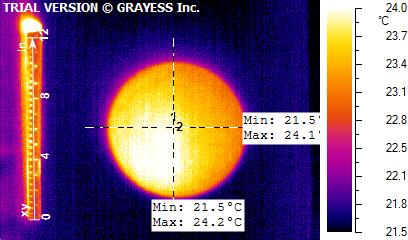 |
|
|---|---|
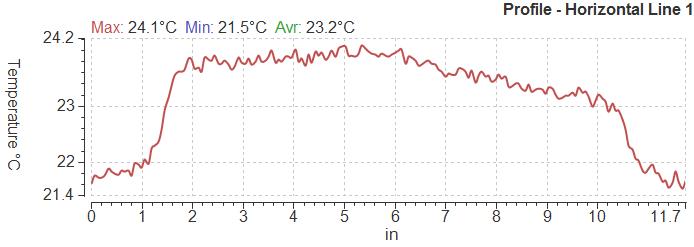 |
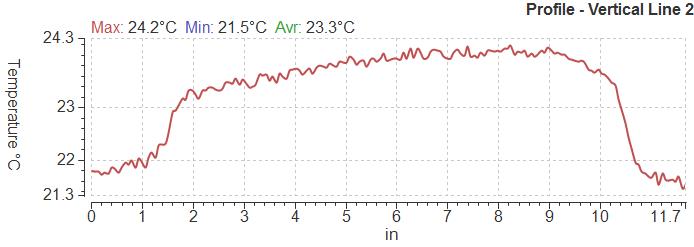 |
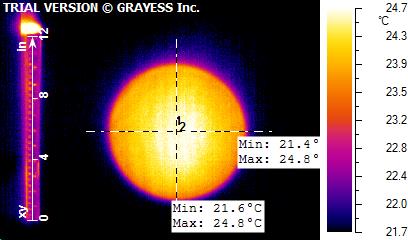 |
|
|---|---|
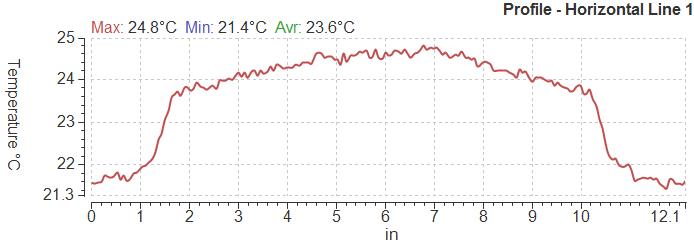 |
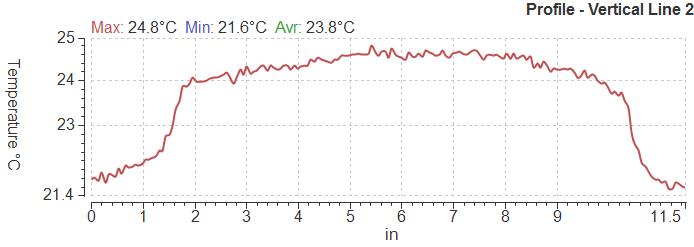 |
A. Sevingy, J. Kissel, A. Staley Continuing with the installation of modified triple acquisition drivers into all lower stages of Recycling Cavity HSTSs, as per ECR E1400369, Integration Issue 936, and work permit 4850. Aaron will post serial numbers when the final install of SRM is complete, however, anxious to use the new drivers, Alexa and I followed yesterday's procedure (see LHO aLOG 13958, we started at Step 2) to make the necessary software changes to support the new drivers on H1SUSPR2 and H1SUSSR2. The only difference was that, unlike PRM, the "twos" needed BOTH stages of COILOUTF filters modified, since they did not have a prior modified driver installed in M2. new safe.snaps, filter files, and top-level models have been committed to the userapps repo. As with yesterday's changes, no DAQ restart was required.
Same has been done for SRM now.
J. Kissel, A. Staley After the L1200226 Modified TACQ Driver LHO aLOG 13956 on the M3 stage of H1 SUS PRM was installed (as a start of the proposal outlined in G1401125), I was quickly reminded that one needs to change the COILOUTF compensation filters *and* the BIO/switching logic in the front end code in order to support the new driver. Thankfully, since we already have the materials we need from when we increased the M2 stages (see E1200931), the process was pretty darn quick. The repercussion is that we now have *another* HSTS library part, called "RC_MASTER.mdl," with the changes outlined in LLO aLOG 4237, except done for M3, and PRM is currently using this new library part. Compensation filters have been updated, and the switchable logic follows the expected behavior. All models, new library parts, and filter files have been committed to the userapps repo. Detailed log of activity. (Start at Step 2 for future HSTS installations that have both M2 and M3 modified). (1) Created new HSTS library part called "RC_MASTER.mdl" (RC is for "Recycling Cavity") - cd /opt/rtcds/userapps/release/sus/common/models/ - cp MC_MASTER.mdl RC_MASTER.mdl - open new library part in matlab - Copy the TACQ_M2_BIO_MASTER" L1200226 modified coil driver logic block from M2 to M3 in the first level's "BIO" block, and rename to "M3". The only difference between these two blocks is the function call to CD_STATE_MACHINE, where it calls the inner function "TACQ_M2" instead of "TACQ," which you can only see if you right-click "Properties..." and look at the description line. - At the top level, change the name of the block from "MC_MASTER" to "RC_MASTER" - Right-click, "Properties..." > change Description from MC MASTER to RC MASTER - Save - svn add - svn commit -m "New library part to support an HSTS with both lower stage coil drivers modified as per L1200226." RC_MASTER.mdl - svn propset svn:keywords 'Id' RC_MASTER.mdl - svn commit -m "Set Id property." RC_MASTER.mdl - svn propset svn:keywords 'HeadURL' RC_MASTER.mdl - svn commit -m "Set HeadURL property." RC_MASTER.mdl (2) Switch h1susprm model to use RC_MASTER.mdl library part - open h1susprm.mdl in matlab - delete main library block (was an MC_MASTER.mdl) - copy in RC_MASTER.mdl from library part - reconnect all top-level connections (there's no new inputs or outputs, so all connections should be identical) - Change name of block from "RC_MASTER" to "PRM" - Save - svn commit -m "Switched main library part to use RC_MASTER.mdl to support installation of modified TACQ drivers, now on M2 and M3." /opt/rtcds/userapps/release/sus/h1/models/h1susprm.mdl (3) Capture, Recompile, Reinstall, Restart, and Restore - open PRM guardian - Note in what state PRM is currently (MANAGED to be MISALIGNED) - Change PRM Guardian mode to EXEC (normally in MANAGED) - Change state request to SAFE, wait for it to finish - cd /opt/rtcds/userapps/release/sus/h1/burtfiles/ - makeSafeBackup sus h1susprm - svn commit -m "Captured latest EPICs values, just in case." h1susprm_safe.snap - ssh controls@h1build - cdsCode (same as cd /opt/rtcds/lho/h1/release/) - make h1susprm - make install-h1susprm - open prm's GDS_TP screen, keep your hand on the "BURT" button - ssh controls@h1sush2a - starth1susprm - hit BURT button, once EPICs values start to return - Go back to Guardian, change state request back to "MISALIGNED" - Change Guardian state back to MANAGED (4) Change M3 compensation filters to match the frequency response of the modified TACQ driver - cd /opt/rtcds/userapps/release/sus/h1/filterfiles/ - open foton, navigate to H1SUSPRM.txt - Uncheck "read only" from "File..." toolbar menu - Navigate to one of the M2 coil compensation filter banks, e.g. PRM_M2_COILOUTF_LL, switch to "multiple" filter mode - copy all four filter banks, FM1, FM2, FM6, FM7 - Navigate to each of the M3 coil compensation filter banks, i.e. PRM_M3_COILOUTF_[UL, LL, UR, LR] - Paste FM1, FM2, FM6, FM7 - Change the ends of the name from "M2" to "M3" - Select FM3 and FM8, and cut them to clear them - Once complete, Save - Go to GDS_TP screen, and load coefficients - Confirm properly loaded by going to M3 COILOUTF screen, right click, "Execute > Foton (Pick Filter PV)" - Compare with M2, to be sure they're the same - svn commit -m "Changed M3 coil driver compensation filters to account for new L1200226 modified driver." (5) Confirm compensation filter switching logic works as expected - Open Binary IO control screen, switch between states 1 through 4, make sure it matches the behavior of T1100507.
Installed a small piece of insulation at the output end of the reference cavity. That helps plug the large hole in the thermal insulation.
The ambient temperature sensor is now mounted to a post behind the reference cavity periscope.
Prior to entering the enclosure I encountered some problems turning on the HEPA FFUs for the laser room. Normally one would hear
them kicking on but I didn't on the first two attempts.
Both air conditioning units stopped whilst I was in the enclosure. With the same error message as the other day
CHECK E4 01
00 ERROR CODE
1C
Hitting the ON button reset things. The control panel on the outside displayed TEMP SWITCH OFF.
SEI- Hugh is doing TF on HAM4 and HAM5.
SUS- Test stand turns out that there are issues with it, will sort them out today, DAQ channels.
OpLev- Jason to take a closer look at the BS optical lever today.
TCS- Some progress acomplished, team needs to project the X beam in the LVEA sometime today.
Vacuum- Kyle is getting ready to perform an accumulation test on the X-arm.
Optic Charge- no action today.
EE- Replacement of multiple triple acquisition coil drivers, then software.
Open work permits updated.
Raw data of the recent X1 accumulation.
I noticed when I came into the morning meeting that the laser had tripped out. It was on earlier today. The most likely cause was that it tripped because I inserted the reference cavity heater card into the Eurocard chassis and made the connection to the temperature sensor box that's on the PSL table. In starting the laser up, I could not open the external shutter from the diode room. The Beckhoff computer indicated there was an EPICS alarm. Went to the control room and hit the control room reset button on the laser script. Went back to the diode room to open the shutter - which worked. By the time I got back to the control room, all the servos were locked. A note in passing, I have to check with Dave Barker to see if this is how the shutter is meant to behave after changing the to RCG 2.8.5. It certainly was easier to recover from than the power outage the other week.
Sunday 14/Sep/2014 no restarts reported
Monday 15/Sep/2014 no restarts reported
model restarts logged for Tue 16/Sep/2014
2014_09_16 09:32 h1sussrm
2014_09_16 09:40 h1sustmsx
2014_09_16 10:09 h1isietmy
2014_09_16 10:27 h1fw1
2014_09_16 10:47 h1ioppsl0
2014_09_16 10:49 h1psldbb
2014_09_16 10:49 h1pslfss
2014_09_16 10:49 h1psliss
2014_09_16 10:49 h1pslpmc
2014_09_16 11:24 h1iopoaf0
2014_09_16 11:24 h1oaf
2014_09_16 11:24 h1odcmaster
2014_09_16 11:24 h1pemcs
2014_09_16 11:24 h1tcscs
2014_09_16 12:03 h1broadcast0
2014_09_16 12:03 h1dc0
2014_09_16 12:03 h1fw0
2014_09_16 12:03 h1fw1
2014_09_16 12:03 h1nds0
2014_09_16 12:03 h1nds1
2014_09_16 12:04 h1nds0
2014_09_16 14:23 h1susprm
maintenance day. unexpected restart of h1fw1. Suspensions work. PSL restart test. OAF DAC card replacement. DAQ restart to synchronize EDCU.
J. Kissel, T. Sadecki Travis has plugged in OSEMs to QUAD06 mounted to Mechanical Test Stand 1, read out by QUADTST, in the West Bay of the LVEA for the first time in many moons. After having re-compiled, re-installed, restarted the front end process a few days ago (see LHO aLOG 13833), the EPICs records ha not been restored. In addition, the OSEMINF and DAMP filter banks were sorely out of date. So, I BURT-restored the presumably very-old ${userapps}/release/sus/h1/burtfiles/h1susquadtst_safe.snap which restored all matrix elements correctly. I then installed the just-measured open light current values (recorded below for QUAD06). However, since the foton filters were all wrong, I took some time to copy the OSEMINF and DAMP filters from H1SUSITMY, turn them on correctly, checked that the matrices and COILOUTF gains are correct, and grabbed a new safe.snap. and committed both filter file and fase.snap. Travis will gather the OSEM serial numbers shortly and match them to there location installed below. OSEM Open Light Compensation Compensation Current [ct] Gain [ ] Offset [ct] M0F1 29723 1.009 -14862 M0F2 29212 1.027 -14606 M0F3 28998 1.035 -14499 M0LF 27100 1.107 -13550 M0RT 29422 1.020 -14711 M0SD 29032 1.033 -14516 R0F1 26949 1.113 -13474 R0F2 28436 1.055 -14218 R0F3 27950 1.073 -13975 R0LF 28311 1.060 -14156 R0RT 27786 1.080 -13893 R0SD 26947 1.113 -13474
Due to some shorting issue that occurred while swapping the R0 LF and RT BOSEMs, I had to swap out the R0 LF BOSEM. We recalculated and reloaded the offset and gain for this channel. The new values are:
OSEM Open Light Compensation Compensation
Current [ct] Gain [ ] Offset [ct]
R0LF 29804 1.007 -14902
And the corresponding serial numbers for all BOSEMs are:
M0F1 026
M0F2 195
M0F3 015
M0RT 102
M0LF 302
M0SD 294
R0F1 310
R0F2 292
R0F3 085
R0RT 029
R0LF 574
R0SD 437